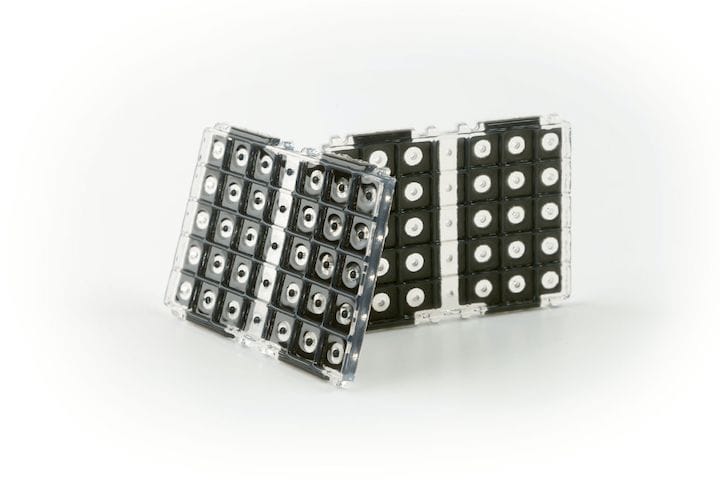![A 3D printed silicone part with electrically conductive material [Source: ACEO]](https://fabbaloo.com/wp-content/uploads/2020/05/image-asset_img_5eb09a275feb1.jpg)
The quest for unusual materials continues, this time with electrically conductive silicone.
Silicone is one of the new frontiers for 3D printing, as it is a highly useful material, yet there are very few 3D printer options capable of properly 3D printing silicone objects. One of those options is ACEO, part of Wacker Chemie AG, a large chemical company from Germany.
The problem being undertaken by those working on silicone 3D printing like ACEO is to overcome limitations in the current technology, which is injection molded liquid silicone rubber. This is a challenge quite analogous to the world of thermoplastic injection molding, which has had significant advances since the arrival of 3D printing alternatives. Perhaps the same will hold with the silicone world.
ACEO’s 3D printing process is somewhat similar to Stratasys’ PolyJet process, in that tiny droplets of liquid silicone are precisely deposited to form a layer, which is then solidified by a UV light source. This repeats until a final object is produced. After printing, objects must undergo final curing in a 200C oven for four hours.
![Inside ACEO’s silicone 3D printer [Source: Fabbaloo]](https://fabbaloo.com/wp-content/uploads/2020/05/image-asset_img_5eb09a27c0d7f.jpg)
As their owner Wacker Chemie AG happens to be a chemical company, one could expect to see a wide variety of materials from the company, and indeed that is the case. As of this writing, they seem to offer several options.
But now there is another option in the works: electrically conductive silicone material. They explain:
“Silicones are used in many applications where electrical conductivity is needed, such as actuators, sensors, generators, heating elements and also advanced applications like cold plasma or printed electronics. 3D printing is the manufacturing method of choice to realize integrated functionalities in only one process step. Freedom of design allows unprecedented product structures. The new silicone rubber can serve applications that need temperature resistance of up to 200°C and provides unchanged conductivity up to 25% elongation.”
I had not realized there was such an application, but apparently there is, and ACEO is meeting the needs with the new material. I am entirely unaware of any other 3D print offering that can provide an electrically conductive silicone material at this time.
One application could be medical, as it would be theoretically possible to 3D print custom-shaped physiotherapy devices to attach to a patient where electrical voltage can be applied to aid healing. The flexible silicone would be very comfortable for the patient, while the electrical traces could be mapped directly to the areas of interest.
![ACEO’s silicone 3D printer [Source: Fabbaloo]](https://fabbaloo.com/wp-content/uploads/2020/05/image-asset_img_5eb09a2818952.jpg)
There are likely many other potential applications, but as always when a new 3D printing technology is introduced to industry, it can take considerable time for those in that industry to recognize and apply it. In some cases, it takes years of effort by the 3D printing companies to market the new concepts successfully.
Nevertheless, those forward-looking designers could take advantage of this interesting new material right away.
Via ACEO











An inventive designer has developed a method for producing 3D paper objects using recycled paper and 3D printed molds.